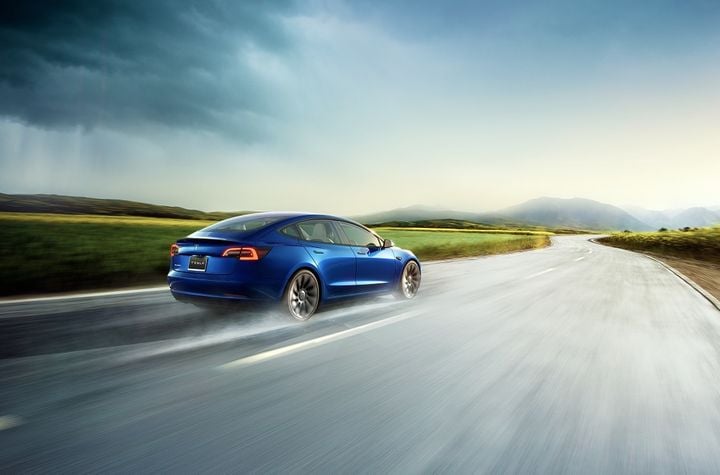
Tesla has been by far the most popular EV brand for four years since the Model 3 debuted, but as more models and brands come to market, its dominance is finally starting to fall.
Photo: Tesla
In the U.S., sales of electrified vehicles — the combined total of EVs, hybrids, and plug-in hybrids — hit a record high in Q3 2022, Kelley Blue Book announced in October 2022, with the EV segment far outpacing the rest of the industry in terms of sales volume and share growth.
Autonomy, an EV subscription service, projects in its EV Market Report that EV sales in the U.S. will hit a run rate of over 1 million units in 2023 sales, and over 5 million units by 2030.
Yes folks, the EV revolution is no longer coming; it’s here, and it’s only going to get bigger (though the market will of course continue to have many ICE sales and be supplemented with other alt-fuels).

While EVs are quickly gaining popularity, many ICE and other alt-fuel vehicles will remain on roads for awhile.
Source: S&P Global Mobility
It’s been a bit slower to adopt in fleets, though. According to Cox Automotive, share of EVs in both rental and leasing fleets was just 0.7% in 2021, though that percentage jumped to 3.3% in 2022 YTD. There was a precipitous drop in ICE vehicle registrations because of the pandemic, in conjunction with a rise in EV fleet registrations.
Electrified Brands & Models
Globally, 18 of the 20 largest OEMs have announced commitments to grow their number of electric models.
KBB reported 19 different EV models sold in the U.S. in 2019, 25 models in Q4 2021, and 38 in Q3 2022.

*as of July 1, 2022
Source: Autonomy EV Market Report, released September 2022
Until 2018, the Chevrolet Volt had been on the market the longest and held the most overall sales, but the model was discontinued in 2019.
Tesla has dominated the EV sales charts since 2018, when the Model 3 became widely available and snagged 50% market share. In 2019, Tesla held about 78% of total EV sales, and the Model 3 alone made up more than 60% of total EVs.
Tesla aside, the next most popular models were the Chevy Bolt EV and Nissan LEAF. In 2021, Tesla also dominated luxury brands for overall sales, outselling Audi, BMW, Lexus, and Mercedes-Benz in the U.S. market. Exiting the pandemic years and moving into the resulting supply-constrained environment, Tesla fared better than most OEMs in managing its supply chain, which drove the spike in sales penetration.
While Tesla is still the leading EV brand, new entries show strong growth as they increase share and grow the marketplace. By Q3 2022, the Ford Mustang Mach-E shot up in sales, and the Audi e-tron, Hyundai Ioniq5, Kia EV6, Rivian R1T, and Volkswagen ID.4 made names for themselves on the charts.

*as of July 1, 2022
Source: Autonomy EV Market Report, released September 2022
Autonomy predicts that by 2023, Tesla’s share of EV sales will fall below 50%.
Electric pickups are picking up steam, too. Ford is one of the first OEMs to start mass production with its much-anticipated F-150 Lightning, which has seen three price hikes and one range increase in the last year. Rivian expects to sell 25,000 of its R1T pickup, while GM will release the Chevrolet Silverado EV in spring 2023.
